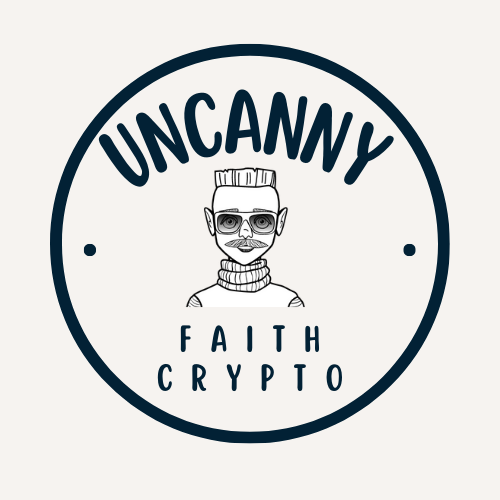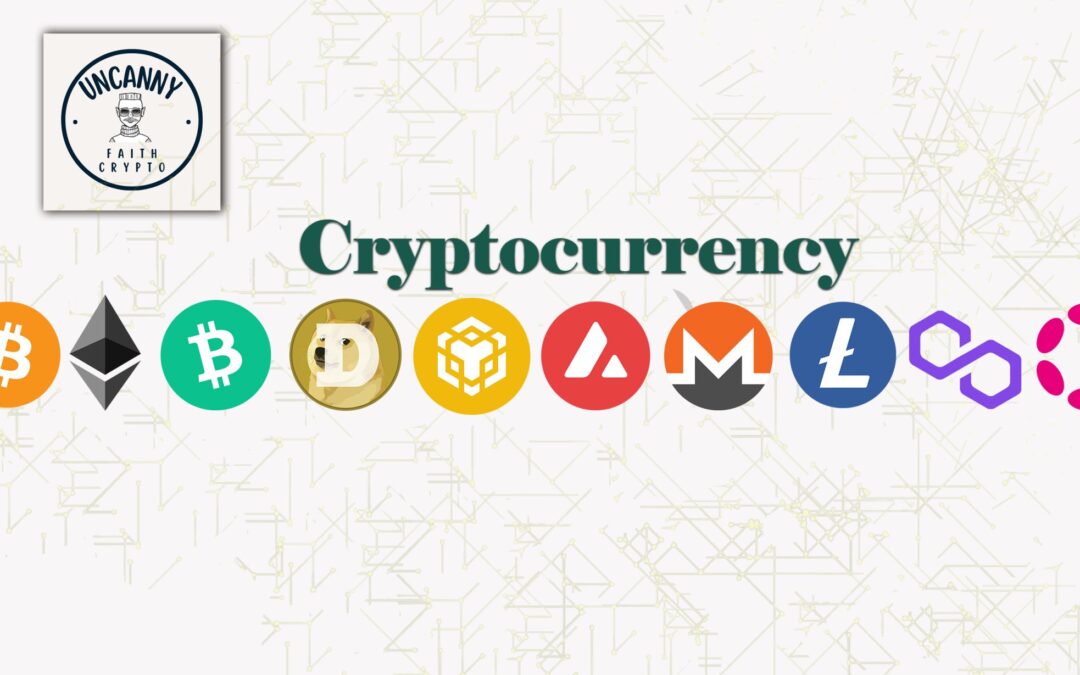
by uncannyfaith | Jan 1, 2025 | Blockchain technology, crypto, Cryptocurrency, Cryptocurrency news and updates, Investing and trading tips
As we step into the heart of the 2020s, blockchain technology continues its rapid pace of evolution, with new platforms and innovations breaking through traditional barriers. One name that consistently stands out is Hedera Network, a decentralised ledger technology that’s revolutionising the blockchain landscape with its unique consensus algorithm and scalability solutions. But what makes Hedera so pivotal for the future of blockchain, especially as we approach 2025? Let’s delve into the key trends shaping Hedera Network’s future and the broader blockchain ecosystem.
In this in-depth article, we’ll explore the emerging trends, projected growth areas, and actionable insights for businesses and individuals looking to harness the exploding potential of Hedera’s infrastructure.
What is Hedera Network?
Before diving into future trends, let’s lay the groundwork by understanding what makes Hedera Hashgraph (commonly known as Hedera Network) such a strong contender in the blockchain space. Unlike traditional blockchain systems, Hedera utilises a unique Hashgraph consensus algorithm, which is a distributed ledger technology built on Directed Acyclic Graph (DAG). This design offers unparalleled speed, security, and energy efficiency, addressing some of the major loopholes in conventional blockchains like Bitcoin and Ethereum.
Key Advantages of Hedera Network:
- Speed: Hedera achieves over 10,000 transactions per second (TPS), significantly outpacing major competitors.
- Energy Efficiency: With its Proof-of-Stake (PoS) model, Hedera is a highly sustainable choice compared to energy-intensive Proof-of-Work (PoW) models.
- Low Costs: Average transaction costs are as low as $0.0001, making it a cost-efficient option for businesses and developers.
- Stability & Governance: Hedera is governed by a group of major corporations, including Google, IBM, and LG, ensuring a decentralised yet stable model.
Now that we’re clear on the basics, let’s dive into the trends you can expect with Hedera and blockchain at large by the year 2025.
Key Trends Shaping the Future of Blockchain Technology with Hedera in 2025
1. Mass Adoption of Decentralised Finance (DeFi)
DeFi has already transformed the financial sector by enabling permissionless lending, borrowing, and investing. However, the slow transaction speeds and high gas fees associated with many DeFi projects have held back mass adoption. Hedera’s low latency and near-zero transaction fees present a solution that could unlock the next phase of DeFi’s evolution.
By 2025, it’s expected that DeFi platforms will increasingly adopt Hedera for:
- Micropayment systems for cross-border transactions.
- Financial asset tokenisation (e.g., real estate, stocks, and commodities).
- Peer-to-peer lending with seamless execution on Hedera’s decentralised smart contract capabilities.
Actionable Insight:
If you’re a developer or financial institution exploring DeFi, consider experimenting with Hedera’s Token Service (HTS), which allows seamless creation and transfer of digital tokens with integrated compliance tools.
2. Growth of Sustainable Blockchain Solutions
With climate change concerns taking centre stage, blockchain networks that minimise energy consumption will dominate the future landscape. Hedera already positions itself as a “green blockchain” due to its low energy requirements compared to PoW blockchains like Bitcoin.
According to a report by the University College of London, Hedera’s annual energy consumption is less than that of popular social media platforms, making it a natural choice for environmentally conscious enterprises.
In 2025, expect more industries, such as supply chain management and carbon credit trading, to adopt Hedera’s eco-friendly platform.
Pro Tip: If you’re a business keen on integrating blockchain into your sustainability initiative, partnering with the Hedera ecosystem can give you a competitive edge in eco-focused industries.
3. Rise of Tokenised Assets and NFTs
Non-Fungible Tokens (NFTs) are no longer just about digital art. By 2025, we’ll see tokenisation expand into other realms, including real estate, intellectual property, and even personal assets like health data. Hedera offers businesses an ideal platform to build scalable, energy-efficient tokenised solutions.
Consider the following possibilities for 2025:
- Real estate companies tokenising property deeds on a Hedera-powered ledger for secure transactions.
- Musicians and artists issuing NFTs with built-in royalty mechanisms using Hedera’s Consensus Service (HCS).
- HealthTech firms leveraging NFTs to tokenise patient consent and data sharing agreements.
Expert Insight: IBM, one of Hedera’s key council members, has already emphasised tokenisation as a game-changer for industries ranging from healthcare to retail.
4. Interoperability Across Blockchain Platforms
One of the biggest challenges in blockchain adoption is the lack of interoperability—blockchains often operate as siloed ecosystems with limited interaction. By 2025, the rise of cross-chain communication bridges will facilitate seamless exchanges between different platforms.
Hedera’s Hashgraph architecture is uniquely designed to integrate with other blockchain networks, making it a crucial player in this space. Expect to see enhanced use cases such as:
- Supply chains using Hedera for carbon offset tracking while syncing data with Ethereum-based applications.
- Cross-network token swaps between Hedera-based assets and coins from other public chains.
5. Decentralised Governance Becoming Mainstream
Hedera’s governing council is one of its standout features—membership includes prominent organisations like Boeing, Google, and Tata Communications. This council-driven model ensures distributed decision-making while maintaining network integrity.
By 2025, decentralised governance systems may serve as a model for public and private sectors. Imagine citizen voting systems, NGO funding, and even corporate governance adopting a Hedera-inspired governance mechanism.
6. Integration with IoT (Internet of Things)
The Internet of Things is rapidly growing, with billions of devices worldwide expected to be interconnected by 2025. Blockchain offers immense opportunities in IoT, from securing device communication to automating micropayments for services.
Hedera’s fast transaction speeds and immutability make it an ideal choice for powering IoT applications. For instance:
- Smart homes could use Hedera-enabled micropayments for energy consumption.
- Autonomous vehicles could leverage Hedera for secure data exchanges in real-time.
Why Hedge Your Bets on Hedera?
As blockchain technology matures, businesses face a critical choice: adopt platforms that are faster, greener, and scalable or risk falling behind. Hedera’s upward trajectory signals a paradigm shift in how decentralised networks could operate in practice by 2025.
Here are some reasons why Hedera is leading the shift:
- Its transaction speed and reliability make it enterprise-friendly.
- The Hashgraph consensus algorithm brings unparalleled security.
- Its energy efficiency and standardised governance offer stability for long-term innovation.
For developers, using Hedera means building on a platform that prioritises future-readiness—making it a smart investment in a fast-changing digital economy.
Frequently Asked Questions (FAQs)
1. What makes Hedera different from traditional blockchain networks?
Hedera operates on Hashgraph, a DAG-based technology, which offers faster transactions, better scalability, and far lower energy consumption compared to conventional blockchain architectures such as Ethereum or Bitcoin.
2. Is Hedera eco-friendly?
Yes. Hedera is one of the most energy-efficient distributed ledger technologies, consuming significantly less energy than traditional blockchain platforms like Bitcoin.
3. How can businesses leverage Hedera?
From powering DeFi applications to deploying tokenised assets and enhancing IoT systems, businesses can utilise Hedera’s low-cost, high-speed, and sustainable infrastructure for diverse use cases.
4. Will Hedera dominate the blockchain space by 2025?
While competition in the blockchain space is fierce, Hedera’s unique features, strong governance, and innovation pipeline make it a high contender to lead decentralised technology adoption into 2025 and beyond.
Final Thoughts: The Hedera Network in 2025
By 2025, blockchain technology will mature to the point where its impact moves beyond hype into everyday realities. Leading this seismic shift, Hedera Network is uniquely positioned to address the key hurdles that have slowed mass adoption of blockchain so far—speed, scalability, and sustainability.
Whether you’re a student curious about blockchain, a developer exploring futuristic applications, or a business leader looking to stay ahead of the curve, there’s no better time to dig deeper into Hedera Network and its transformative capabilities. The future is decentralised, and Hedera is writing the next chapter.
Are you ready for it?
Note: To fully engage your audience, consider integrating related infographics on Hedera’s transaction speeds, industry statistics on blockchain adoption, and a comparison table of energy consumption across different distributed ledgers.
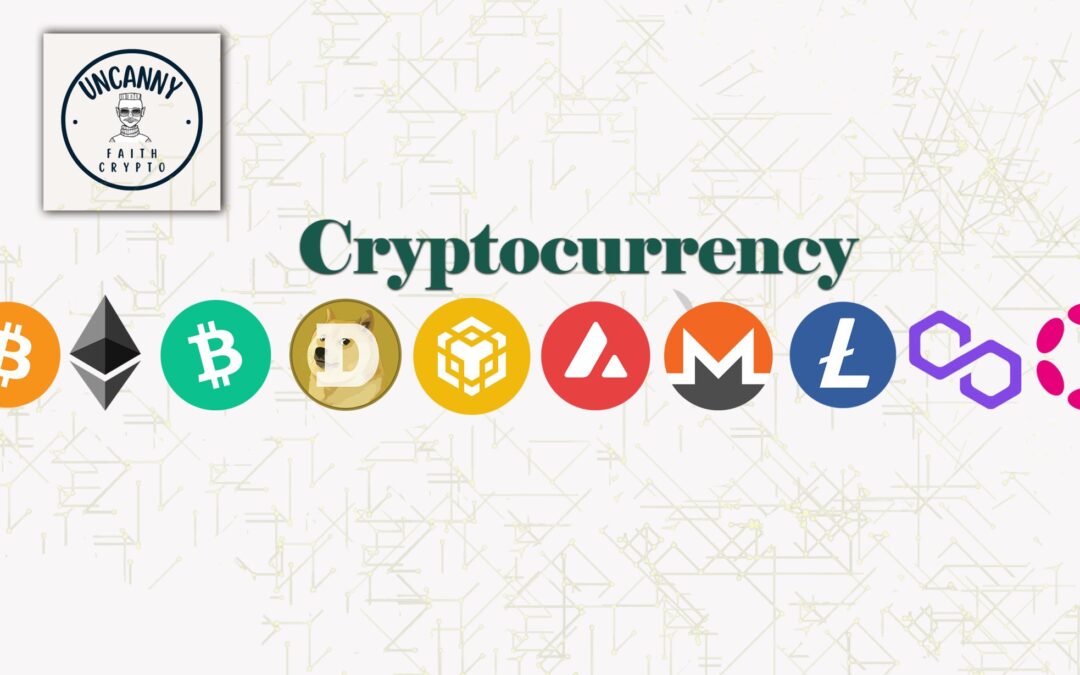
by uncannyfaith | Jan 1, 2025 | Blockchain technology, crypto, Cryptocurrency, Cryptocurrency news and updates, Investing and trading tips
The crypto lending space has undergone monumental changes over the past decade. Among the key players making an impact is Celsius Network, a platform that revolutionised decentralised finance (DeFi) by enabling users to earn interest on their cryptocurrencies and access loans without selling their assets. However, the road ahead for Celsius is lined with opportunities and challenges, demanding close scrutiny. As we step closer to 2025, this article provides a comprehensive look at the predictions for Celsius Network’s future and its role in the ever-evolving crypto lending space.
What Is Celsius Network? A Brief Overview
Before delving into the 2025 predictions, let’s first establish what Celsius Network is all about. Founded in 2017 by Alex Mashinsky and Daniel Leon, Celsius is a decentralised finance platform that allows cryptocurrency holders to earn interest on their holdings or borrow against them. The platform supports numerous cryptocurrencies, including Bitcoin, Ethereum, and stablecoins like USDT.
Celsius differentiates itself through competitive features, such as zero fees, high APYs (Annual Percentage Yields), and user-friendly design. The service operates on the principle of making financial independence achievable for everyone, contrasting traditional financial systems that often exclude or exploit smaller players.
The Current State of Crypto Lending
To predict Celsius Network’s future in 2025, it’s essential to understand the current state and trends in DeFi and crypto lending:
-
Exponential Growth of DeFi: Decentralised finance has witnessed unprecedented growth in recent years, with platforms like Celsius Network enjoying soaring traction. According to estimates, the total value locked (TVL) in DeFi surpassed $40 billion by 2023.
-
Competition Intensifies: Major players like BlockFi, Aave, and Nexo intensify competition. While Celsius Network has held its ground, maintaining a loyal user base, the arrivals of new platforms and innovations could pressure its market share.
-
Regulatory Uncertainty: Regulatory scrutiny looms as governments and financial watchdogs attempt to standardise policies governing cryptocurrencies and DeFi platforms. Celsius Network and others will need to adapt to these evolving standards to ensure compliance.
- Institutional Adoption: Increasing institutional adoption ensures higher acceptance of platforms like Celsius, particularly among mainstream audiences looking for secure and trustworthy crypto transactions.
Given these dynamics, let’s explore where Celsius might be headed by 2025.
Predictions for Celsius Network in 2025
1. Strengthened Market Position Through Innovation
Celsius Network has consistently prioritised innovation and set itself apart by offering better incentives for its customer base. By 2025, Celsius is likely to double down on technological advancements such as Layer 2 solutions to increase transaction speeds and decrease fees.
Additionally, Celsius could embrace artificial intelligence (AI) to enhance decision-making processes relating to lending, borrowing, and interest calculations. These innovations could expand its user base and strengthen its foothold in the DeFi market.
Actionable Insight:
Investors interested in Celsius should watch developments in blockchain scalability and AI investments to evaluate its growth positively.
2. Expansion Into Emerging Markets
If the crypto adoption rate in countries like India, Brazil, and Nigeria continues its upward trajectory, Celsius could target these regions aggressively by 2025. Such expansion might come with the inclusion of more fiat-to-crypto on-ramps and partnerships with regional fintech firms.
Since Celsius appeals to those who are underserved by traditional banking systems, emerging markets offer a golden opportunity for customer acquisition. However, tackling regional regulations will be essential.
Actionable Insight:
If you’re a user based in emerging markets, keep an eye on Celsius’ international partnerships to envision potential benefits and features tailored to your region.
3. Impact of Regulatory Changes
By 2025, regulations governing crypto lending platforms will likely mature. Celsius will need to demonstrate transparency and compliance on an unprecedented scale. Adopting anti-money laundering (AML) processes, KYC protocols, and operational audits might become the norm.
Anton Mozgovoy, co-founder of the blockchain firm Mover, recently remarked, “The fate of many DeFi platforms will lie in how well they comply with upcoming regulations. Compliance could make or break most players in this space.”
Celsius appears well-equipped to handle this, given its transparent operational mechanisms thus far, but adapting to new rules while staying competitive will remain a challenge.
Actionable Insight:
Regulatory clarity could be a double-edged sword, so expect corresponding shifts in Celsius’ interest returns and operational policies.
4. Integration With Traditional Finance (CeFi-DeFi Merging)
By 2025, the lines between centralised finance (CeFi) and decentralised finance (DeFi) are expected to blur. Traditional institutions like banks could start integrating DeFi protocols within their operations. Celsius might position itself as a bridge, collaborating with these entities while maintaining its DeFi identity.
For instance, Celsius could launch hybrid offerings—products blending the accessibility of DeFi with the formal guarantees offered by CeFi ecosystems. Such partnerships would give Celsius a unique value proposition in an increasingly crowded market.
Actionable Insight:
For users, hybrid products could offer enhanced liquidity and flexibility. Stay attuned to announcements about partnerships with central banks or mainstream financial players.
5. Broader Token Utility & User Incentives
Celsius’ native CEL token has primarily been used for earning rewards and accessing premium perks. By 2025, users could see an enhanced focus on expanding CEL’s utility, such as governance rights or integration into staking protocols. This increased functionality could bring CEL closer to the ranks of multi-functional tokens like ETH.
Such utility expansion may come with exclusive features geared towards high-value investors or those deeply entrenched in DeFi ecosystems, thus incentivising higher engagement levels.
Actionable Insight:
Keep track of updates relating to the CEL token utility roadmap and analyse how changes could align with your investment or earning goals.
Challenges Celsius May Face By 2025
While the prospects for Celsius appear positive, challenges cannot be overlooked:
-
Cybersecurity Risks: DeFi platforms remain lucrative targets for hackers. Celsius will need to reinforce its cybersecurity architecture to prevent unauthorised breaches and adapt to evolving threats.
-
Increased Competition: With numerous new entrants and rapid advancements in technology, retaining a competitive edge will require both aggressive innovation and persistent user-centric value delivery.
-
Market Volatility: Like all crypto-adjacent services, a sudden market downturn or bearish trend could severely impact Celsius’ revenue and user base.
- Regulatory Red Tape: Regional crypto bans or restrictive regulatory frameworks might force Celsius to reconsider its business blueprint in some countries.
Is Celsius Network Worth Considering for Your Crypto Strategy?
For many users, Celsius offers a reliable way to maximise crypto holdings, whether through earning interest or accessing liquidity via loans. If the platform continues to innovate, expand, and adapt to the changing ecosystem, Celsius could become a dominant force in financial freedom solutions by 2025.
However, potential users should remain cautious about the inherent risks associated with cryptocurrencies and DeFi platforms. Diversification is key to minimising these risks while enjoying potential rewards.
FAQ Section
1. Is Celsius Network decentralised?
Celsius operates as a centralised platform with decentralised features, making it a hybrid model. While offering DeFi-like returns, its operations and wallet management are centralised.
2. Can Celsius compete with platforms like Aave and Compound?
Celsius sets itself apart with user-friendly lending and interest-earning options while avoiding high transaction fees. However, true success depends on its ability to outperform competitors through innovation and user incentives.
3. What will the CEL token be worth in 2025?
While predictions range widely, Celsius’ token value will likely depend on increased utility, platform performance, and market sentiment. Regular token utility updates and adoption rates will influence its price trajectory.
4. How secure is Celsius Network?
Celsius employs measures such as multi-party computation (MPC), insurance on custody wallets, and rigorous audits to enhance security, but no system is immune to cyber threats.
Final Thoughts
As the crypto lending space continues its rapid transformation, platforms like Celsius Network are poised to redefine how individuals manage their financial portfolios. By 2025, Celsius could carve out a stronger position, especially if it embraces cutting-edge technology, adapts to regulations, and expands into untapped markets.
Whether you’re a seasoned crypto enthusiast or a curious newcomer, Celsius’ journey in the years to come is worth observing—but as always, tread cautiously and stay informed before making financial investments.

by uncannyfaith | Jan 1, 2025 | Cryptocurrency news and updates
Elon Musk Adopts "Kekius Maximus" Persona on Social Media, Sparking Online Frenzy
Billionaire entrepreneur Elon Musk, the founder of Tesla and SpaceX, recently made waves by changing his username on X (formerly known as Twitter) to "Kekius Maximus." In addition to the new moniker, Musk also updated his profile picture to the iconic Pepe the Frog, a cultural meme recognized worldwide.
The new username appears to be a creative blend of cultural influences. The term "Kek" traces its origins to the popular game World of Warcraft, where it served as a translation for "LOL" between factions. It later evolved to become a cornerstone of modern meme culture, often associated with Pepe the Frog. Meanwhile, "Maximus" seems to reference the legendary character Maximus Decimus Meridius from the critically acclaimed film Gladiator, symbolizing leadership, greatness, and resilience.
Cryptocurrency Surge Follows Musk’s Username Shift
Musk’s digital rebranding quickly grabbed attention, igniting lively discussions across social media. Surprisingly, Musk’s choice of username also seemed to affect cryptocurrency markets. A memecoin, associated with the meme culture Musk tapped into, surged by over 1,000% in value within just four hours of his profile update. Trading volume for the coin skyrocketed, exceeding $40 million, while its market capitalization reached an impressive $100 million.
Mixed Reactions to Musk’s Pepe Avatar
Musk’s adoption of Pepe the Frog as his profile picture generated both support and controversy. Loyal fans applauded Musk for embracing meme culture and staying relevant in the digital world. However, critics raised concerns about Pepe’s use in certain controversial contexts.
Observers speculate that this move is tied to Musk’s well-known fascination with cryptocurrencies such as Dogecoin and his history of engaging with meme-based communities. Notably, both "Kek" and Pepe the Frog hold significance within crypto subcultures that include meme-based digital coins and NFTs.
Musk’s Legacy in Meme Culture and Crypto
Elon Musk’s ability to shape narratives through social media is undeniable. By adopting the "Kekius Maximus" persona, Musk continues to blur the line between technology, internet culture, and finance. Whether through enhancing meme-based investments or sparking trending conversations online, Musk remains a prominent driving force in the digital sphere.
As discussions around this latest move persist, Musk once again proves his unique ability to influence markets, memes, and the global conversation with just a simple profile update.
Stay connected for more updates on tech, trends, and cryptocurrencies.
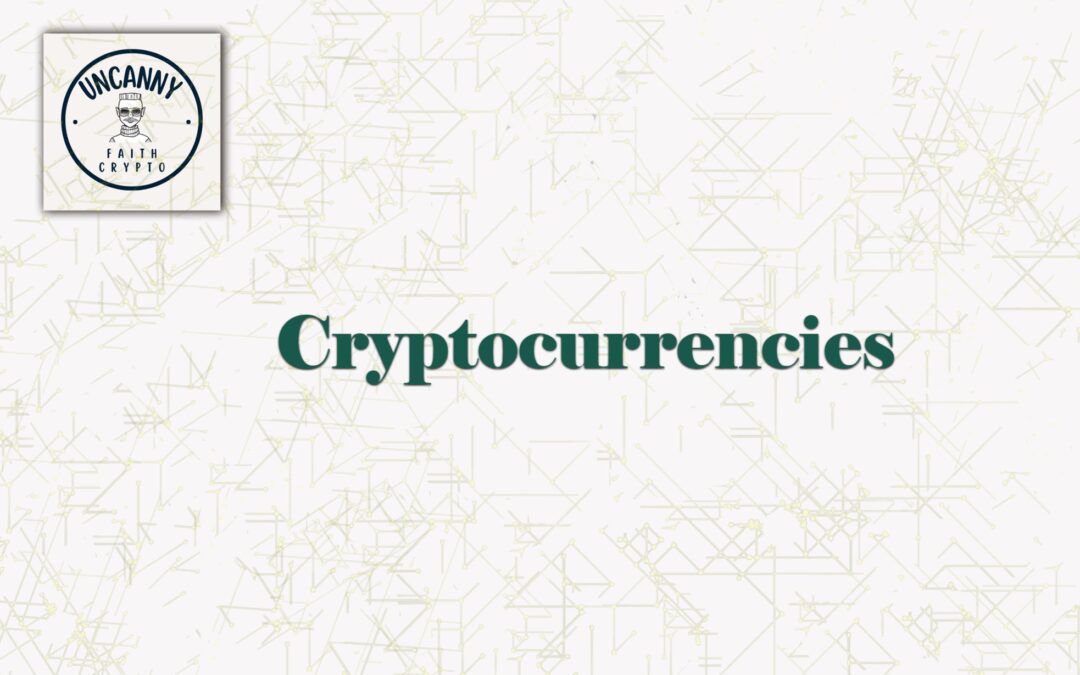
by uncannyfaith | Jan 1, 2025 | Blockchain technology, crypto, Cryptocurrency, Cryptocurrency news and updates, Investing and trading tips
In the ever-evolving world of cryptocurrency, stablecoins have become a cornerstone of blockchain-based financial systems. Among these, Tether (USDT) stands tall as a market leader, acting as both a catalyst for innovation and a subject of constant debate. As we step into 2025, Tether’s role in shaping the future of the stablecoin industry remains critical, raising intriguing questions about its growth trajectory, regulatory landscape, emerging competitors, and technological developments. In this article, we’ll explore the key trends that will define Tether’s impact on the broader cryptocurrency ecosystem in 2025 and unpack the forces driving change in the industry.
Whether you’re a crypto enthusiast, an investor, or someone just curious about the interplay between digital assets and traditional finance, stick around as we dive into this pivotal topic.
What is Tether (USDT), and Why Does It Matter in 2025?
Before diving into the future, let’s revisit what Tether is and why it holds significance. Tether, the first and most widely adopted stablecoin, was introduced in 2014 as a solution to cryptocurrency volatility. Each USDT token is pegged 1:1 to the US Dollar, providing traders with a stable asset to hedge risks or move funds across exchanges.
In 2023, Tether’s market capitalisation surpassed $80 billion, securing its position as the dominant player in the stablecoin space. Fast forward to 2025, and its relevance is unlikely to wane. However, as regulatory pressures mount, technological advancements accelerate, and new competitors emerge, how will Tether adapt and thrive in this rapidly changing environment?
Let’s explore the key trends that will shape its journey.
Trend #1: Regulatory Scrutiny Intensifies
The stablecoin industry is under immense regulatory scrutiny, and Tether has often found itself at the centre of this spotlight. In 2025, this trend will likely continue as governments and international bodies strive to establish clear rules for stablecoin issuers.
Why is Regulation Important?
Regulation ensures transparency, trust, and compliance with anti-money laundering (AML) and countering the financing of terrorism (CFT) frameworks. In Tether’s case, its reserve holdings and periodic audits have been questioned in the past, leading to criticisms about transparency.
Since stablecoins bridge the gap between fiat currencies and cryptocurrencies, governments are expected to impose stricter reserve disclosure requirements to monitor systemic risks. For Tether, adhering to these rules could enhance investor confidence but may also introduce operational complexities.
Prediction for Tether in 2025:
Tether will likely invest in increasing transparency, publishing monthly reserve reports or even adopting real-time auditing solutions powered by blockchain technology. This proactive approach could allow Tether to stay ahead of regulatory changes while strengthening its brand as a trustworthy stablecoin provider.
Trend #2: Rise of Central Bank Digital Currencies (CBDCs)
As central banks worldwide continue to explore and develop CBDCs, stablecoins like Tether may face significant competition. CBDCs, being government-backed digital currencies, could offer similar stability with added regulatory assurances, posing a challenge to private stablecoins.
Will CBDCs Overtake Tether?
While CBDCs might lure some users away due to their trust factor and official backing, Tether’s advantage lies in its flexibility and the interoperability of blockchain ecosystems. Unlike CBDCs, which may be siloed for specific use cases or regions, Tether operates across multiple blockchains (e.g., Ethereum, Tron, Solana) and has a deep integration with crypto exchanges, decentralised finance (DeFi) platforms, and Web3 applications.
Actionable Insight:
To remain competitive, Tether may need to expand its multi-chain strategy further and establish partnerships with decentralised applications (dApps) that rely on its liquidity.
Trend #3: Integration with Web3 and the Metaverse
In 2025, the Web3 ecosystem and metaverse projects are expected to drive mass adoption of cryptocurrencies. These digital realms require liquid, stable assets for transactions, in-game purchases, and cross-border payments. Tether’s ubiquity as a stable medium of exchange makes it an ideal choice for these use cases.
Use Cases in the Metaverse
- Gaming: Tether could be used for in-game purchases or as collateral for virtual land ownership in metaverse games.
- Commerce: Virtual marketplaces in the metaverse will need stablecoins to facilitate the sale of NFTs, digital goods, and services.
- Interoperability: Tether’s cross-chain compatibility ensures seamless integration across multiple metaverse platforms.
Pro Tip: If you’re a developer building for the metaverse, consider adopting Tether for its widespread acceptance and operational stability.
Trend #4: Competition from Algorithmic and Collateralised Stablecoins
Tether’s position as a fiat-backed stablecoin may come under pressure from emerging designs, such as algorithmic stablecoins (e.g., Frax) and fully collateralised alternatives like Circle’s USDC.
The Algorithmic Approach
Unlike Tether, algorithmic stablecoins maintain their peg through complex mechanisms like supply-and-demand algorithms or arbitrage incentives, without relying on fiat reserves. While these models suffered setbacks in 2022 (e.g., Terra/LUNA crash), their designs have evolved significantly, making them contenders for mass adoption.
Will algorithmic designs replace Tether? Unlikely. However, they may carve a niche for themselves as innovative products within the DeFi space.
Trend #5: Tether’s Role in Financial Inclusion
Beyond speculation and digital commerce, stablecoins like Tether are emerging as tools for financial inclusion, especially in regions with unstable economies or limited banking infrastructure.
In 2025, Tether could play a pivotal role in:
- Remittances: Enabling low-cost, instant cross-border transfers for migrant workers and residents in developing countries.
- Hedging Against Inflation: Offering a USD-pegged asset in countries with hyperinflation.
- Tokenised Savings: Allowing users to store value in a stable medium without fiat banking systems.
For example, countries in Latin America, Africa, and Southeast Asia have increasingly relied on stablecoins as substitutes for volatile native currencies. In these regions, Tether may become integral to everyday transactions.
Trend #6: Sustainability and Green Initiatives
With increased awareness of environmental concerns, sustainability is becoming a significant focus in blockchain development. By 2025, stablecoins like Tether may come under pressure to reduce their ecological footprint, particularly from energy-intensive blockchain networks.
Potential Green Solutions
- Migrating to Eco-friendly Chains: Adopting low-energy blockchain platforms such as Polkadot or Cardano.
- Carbon Offsetting: Partnering with organisations to offset the carbon footprint associated with transactions.
- Proof-of-Stake Integration: Moving away from proof-of-work-based chains to streamline operations.
If Tether leads sustainability efforts in the stablecoin space, it could not only strengthen its market position but also appeal to environmentally conscious investors and businesses.
Trend #7: Enhanced Security Measures
As the stablecoin industry grows, so does the threat of cyberattacks, fraud, and smart contract vulnerabilities. In 2025, both institutional investors and retail users will prioritise platforms that offer robust security measures.
For Tether, this could mean:
- Strengthening custodial security for fiat reserves.
- Developing tamper-proof technologies for minting and burning tokens.
- Offering insurance against losses due to hacks or fraud.
Frequently Asked Questions (FAQs)
1. Can Tether maintain its dominance by 2025?
Tether’s dominance will depend on its ability to adapt to regulatory challenges, expand its partnerships, and diversify its use cases in emerging ecosystems like Web3 and the metaverse.
2. Is Tether fully backed by reserves?
Tether claims its USDT tokens are fully backed by cash, cash equivalents, and other assets, but it has faced criticism regarding the transparency of its reserves. Efforts to improve auditing practices may address this by 2025.
3. How will CBDCs impact Tether?
While CBDCs could reduce reliance on private stablecoins, Tether’s interoperability within blockchain ecosystems and DeFi applications should enable it to coexist with these government-backed solutions.
4. What makes Tether different from other stablecoins?
Tether’s wide adoption, multi-chain compatibility, and established liquidity across exchanges make it unique. However, it faces ongoing competition from alternatives like USDC and algorithmic stablecoins.
Conclusion
As we move closer to 2025, Tether stands at the forefront of a rapidly transforming stablecoin industry. From regulatory challenges to technological innovation, Tether’s ability to evolve and integrate with emerging trends will determine its relevance in a competitive landscape.
For investors, developers, and businesses, keeping an eye on Tether’s moves—whether it’s expanding into the metaverse, enhancing transparency, or embracing green initiatives—will be crucial. As the bridge between traditional finance and decentralised ecosystems, Tether’s journey is far from over, and its impact on the cryptocurrency space in 2025 is likely to be profound.
What do you think lies ahead for Tether and the stablecoin industry? Share your thoughts in the comments below!
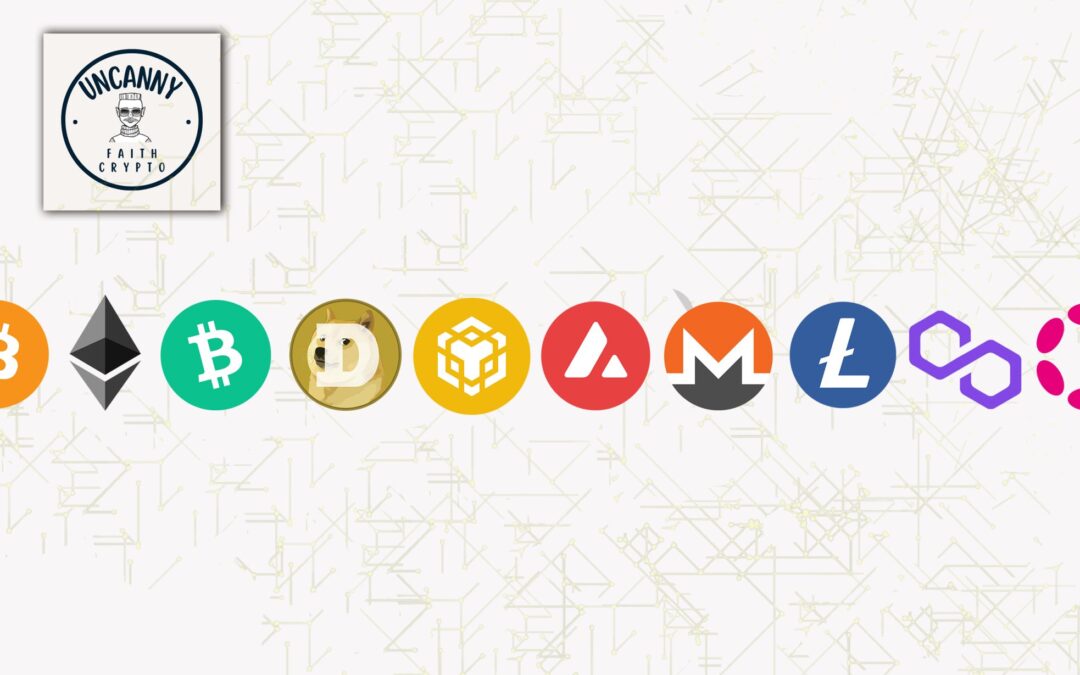
by uncannyfaith | Jan 1, 2025 | Blockchain technology, crypto, Cryptocurrency, Cryptocurrency news and updates, Investing and trading tips
In recent years, the world of finance and technology has undergone a dramatic evolution, with blockchain technology playing a pivotal role in reshaping traditional systems. One of the most significant innovations emerging from this transformation is tokenized securities, an area where Polymath—a leader in blockchain infrastructure—has been making waves since its inception. As we inch closer to 2025, tokenized securities are poised to disrupt the global financial landscape, bringing unprecedented opportunities and changes to industries worldwide. But what exactly does the future hold? Will Polymath maintain its position as a trailblazer, and how will tokenized securities evolve in the coming years?
In this in-depth article, we’ll explore the rising phenomenon of tokenized securities, Polymath’s role in shaping this space, trending developments, and expert predictions for 2025. Whether you’re an investor, entrepreneur, or tech enthusiast, this guide will answer your key questions and provide actionable insights into an industry that’s set to redefine finance as we know it.
What are Tokenized Securities?
Before diving into Polymath’s contribution and the trends redefining the industry, let’s clarify what tokenized securities are. In simple terms, a tokenized security is a digital representation of a real-world financial asset—like shares of a company, bonds, real estate, or even commodities—stored and traded on blockchain networks. Unlike traditional securities, these digital assets leverage the unique features of blockchain technology, such as transparency, efficiency, liquidity, and democratisation, to create new opportunities for both investors and issuers.
Tokenized securities combine the benefits of conventional financial instruments with the power of decentralised infrastructure, allowing for fractional ownership, 24/7 trading, and lower transaction costs. Tokenisation broadens access to investment opportunities, making them available to a global audience, including those previously excluded due to intermediaries or minimum capital restrictions.
Why Tokenized Securities Matter
Tokenized securities matter because they represent a fundamental shift in how assets are issued, traded, and managed. For example:
- Enhanced Accessibility: Investors can access previously illiquid and exclusive investment opportunities.
- Reduced Friction: Middlemen are largely eliminated, lowering fees and speeding up transactions.
- Regulatory Transparency: Blockchain offers greater auditability and compliance efficiency.
- Improved Liquidity: Fractional ownership makes high-value assets (e.g., real estate) accessible and tradeable.
The Role of Polymath in Tokenized Securities
Enter Polymath, a blockchain technology company that has been instrumental in bridging the worlds of blockchain and traditional finance. Founded in 2017, Polymath specialises in providing infrastructure for issuing and managing tokenized securities. At the heart of Polymath’s innovation is its Polymesh blockchain, a permissioned blockchain explicitly designed for regulated assets.
Why Polymesh Is a Game-Changer
Polymesh addresses many of the challenges posed by public blockchains, such as KYC/AML compliance, governance, and asset ownership restrictions, making it an ideal framework for tokenized securities. Key features include:
- Identity Verification: Ensures regulatory compliance by integrating identity verification into the blockchain.
- Compliance Automation: Regulatory rules are embedded into smart contracts, automating compliance with global standards.
- Confidentiality: Provides privacy for sensitive investor or issuer data without compromising blockchain transparency.
- Governance and Security: Decision-making governance frameworks are built into Polymesh, ensuring transparency and reliability.
Polymath empowers businesses, institutions, and developers to launch Security Token Offerings (STOs) seamlessly, without the pitfalls of other permissionless blockchain environments.
Trends in Tokenized Securities for 2025
The tokenized securities market has already gained traction in recent years, but several trends indicate an explosive growth trajectory by 2025. Here’s what we predict based on current market dynamics:
1. Institutional Adoption on a Massive Scale
In 2023, we saw major financial institutions such as Fidelity, JPMorgan, and BlackRock exploring blockchain assets. By 2025, tokenized securities will likely become a staple for institutional portfolios. Banks, hedge funds, and venture capital firms will adopt tokenisation to enhance liquidity and access global asset classes. Thanks to platforms like Polymesh, institutions will have a compliant and efficient gateway to participate in this revolution.
2. Mainstream Regulatory Clarity
Regulatory uncertainty remains a hurdle for tokenised securities in 2023. However, countries like Singapore, Switzerland, and the UAE are leading the way in establishing clear legal frameworks for these assets. By 2025, more governments and regulatory bodies are expected to align with blockchain innovations, standardising compliance for tokenized securities. Polymath’s pioneering compliance-first infrastructure positions it advantageously for capitalising on such clarity.
3. Tokenised Real Assets to Dominate
One of the largest growth areas will be the tokenisation of tangible assets like real estate, infrastructure, and commodities. Tokenising high-value assets lowers entry costs for investors, leading to broader participation. For instance, owning a fraction of a Grade A office complex in a prime city will be as simple as buying shares in a company.
4. The Rise of Hybrid Financial Instruments
By 2025, we expect to see hybrid models, blending elements of tokenized securities and decentralised finance (DeFi). Imagine a scenario where tokenised real estate shares could be used as collateral in DeFi protocols or tokenised bonds generate yield through staking. Polymath’s infrastructure supports such interoperable integrations due to its adaptability with DeFi ecosystems.
5. Increased Retail Participation
Tokenised securities will increasingly attract retail investors who’ve long been priced out of opportunities like venture capital, property, or art investments. Fractional token ownership will democratise investment, making it easier for retail participants to build diversified portfolios via platforms powered by Polymath.
Predictions for Polymath’s Future by 2025
Polymath has established itself as a driving force behind tokenized securities. Here are our predictions for how it will evolve by 2025:
- Wider Adoption of Polymesh: Polymesh will likely gain traction as the go-to blockchain for regulated securities, onboarding financial institutions, asset managers, and governments.
- New Partnerships: As traditional finance embraces blockchain, Polymath is expected to forge strategic collaborations with major banks, exchanges, and fintech firms.
- Product Expansion: Polymath may introduce new tools and services, such as investor dashboards, token management solutions, or DeFi-integrated features, to broaden its offering.
- Universal Compliance Framework: With regulatory clarity improving globally, Polymath might pioneer an international compliance standard embedded into Polymesh’s ecosystem.
Actionable Steps for Businesses and Investors
Want to benefit from the tokenized securities revolution? Here are practical steps:
For Businesses:
- Explore Security Token Offerings (STOs): If raising capital, consider launching compliant tokenized securities on Polymesh.
- Partner with Blockchain Innovators: Collaborate with blockchain platforms, like Polymath, that provide compliant frameworks.
- Educate Stakeholders: Ensure investors and board members understand the benefits of tokenized securities.
For Investors:
- Research Opportunities: Monitor industries merging with blockchain to identify lucrative investment opportunities.
- Diversify Your Portfolio: Include tokenized securities to access previously illiquid, high-value assets.
- Stay Ahead of Regulations: Familiarise yourself with your jurisdiction’s evolving regulatory landscape for tokenised assets.
Frequently Asked Questions (FAQ)
1. What is Polymath’s main contribution to tokenized securities?
Polymath enables the compliant issuance and management of tokenized securities through its blockchain ecosystem, Polymesh.
2. How do tokenized securities differ from cryptocurrencies?
While cryptocurrencies are decentralised digital currencies, tokenized securities are blockchain-based representations of traditional financial assets, like equity or bonds, with compliance mechanisms baked in.
3. Are tokenised securities legal globally?
The legality and regulations governing tokenised securities vary by country. However, jurisdictions like the US, EU, and Singapore have made significant progress in creating frameworks.
4. What industries are best suited for tokenisation?
Real estate, infrastructure, private equity, commodities, and luxury collectibles (e.g., art) are particularly ripe for tokenisation due to their illiquid nature and high value.
5. Is Polymath the only player in the tokenization space?
No, while Polymath is a key player, there are other platforms like Securitize and tZERO. However, Polymath stands out for its compliance-first infrastructure via Polymesh.
Final Thoughts
Tokenized securities are no longer just a futuristic concept—they are now reshaping finance and bridging the gap between blockchain technology and traditional assets. While challenges like regulatory uncertainties remain, companies like Polymath are paving the way for more secure, accessible, and efficient global markets.
By 2025, we can expect tokenized securities to become one of the most talked-about sectors in blockchain, backed by real-world adoption across industries. Whether you’re a participant in legacy financial systems or a blockchain advocate, staying ahead of these trends will be crucial for capitalising on this monumental shift.
Ready to dive into tokenized securities? With Polymath leading the charge, the future of investment possibilities has never looked brighter.

